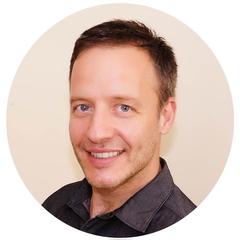About the author

Dr. István Albert is renowned for being at the forefront of the Bioinformatics frontier and pushing the field forward in new directions.
He helped pioneer the Galaxy Bioinformatics Platform, an open-source web-based tool that allows users to perform and share data-intensive biomedical research. He also developed BooleanNet, a biological system simulation software and the GeneTrack software platform that automates and processes large sets of biological data.
Currently, Dr. Albert is the lead software developer, maintainer and administrator of the website, Biostars: Bioinformatics Questions and Answers, the most comprehensive information source in Bioinformatics that is visited by millions of people every year.
Besides being well-known for his scientific innovations in three different scientific fields: Physics, Computer Science and Biology with publications that gathered over 10 thousand citations, Dr. Albert is a celebrated educator. The courses he develops are consistently highly ranked and revered by students.
In 2014, István was awarded the Paul M. Althouse Outstanding Teaching Award at Penn State for the superb quality of his lectures. The lecture information that has garnered him such high praise is the very same material that you will find in the Biostar Handbook.
Dr. Albert is currently a Research Professor of Bioinformatics at Pennsylvania State University and the Director of the Bioinformatics Consulting Center at this institute. István established this cutting-edge research facility where he has advised and assisted dozens of brilliant young scientists in their ambitious endeavors. He also leads the Graduate Certificate Program in Applied Bioinformatics, a comprehensive Bioinformatics training course offered through the Penn State World Campus that allows anyone, anywhere, to attain in-depth knowledge of this exciting new field.
The Handbook’s main author and editor is Dr. Istvan Albert.
- Personal website: https:/www.ialbert.me
- Email: istvan.albert@gmail.com
Contributors
- Colton Robbins, MS, Molecular Biology, for assistance in proofreading and editing.
- Aswathy Sebastian, Ph.D, Bioinformatics Analyst, Bioinformatics Consulting Center, Pennsylvania State University, USA
- Reka Albert, Ph.D., Professor of Physics and Biology, Department of Physics, Pennsylvania State University, USA
- Jeremy Leipzig, MS, Senior Data Integration Analyst, The Children’s Hospital of Philadelphia, USA
- Hemant Kelkar, Ph.D., Research Associate Professor, Department of Genetics and Center for Bioinformatics, University of North Carolina, USA
- Ming Tang, Ph.D., Computational biologist in Genomic Medicine Department, MD Anderson Cancer Center, USA
- Ram Srinivasan, MS, Bioinformatician, Icahn School of Medicine and Mount Sinai, New York, NY, USA
- Wei Shen, Ph.D. student, Third Military Medical University, China.
- Wouter De Coster, Ph.D. Student, University of Antwerp, Belgium
- Madelaine Gogol, BS, Programmer Analyst, Stowers Institute, Kansas City, MO, USA
- John Dale, retired physician, biohacker, Ham Radio enthusiast(VE7QJD), commercial pilot, Nelson, BC, Canada
Can I contribute to the book?
Join our effort to build a comprehensive and up to date compendium for genomic data analysis.
It is a simple process that works through GitHub via simple, text-based, Markdown files. The only permission we ask from authors is the right to publish their content under our own terms (see below).
Authors retain re-publishing rights for the material that they are the principal author of and may re-distribute the content that they have created for this book under any other terms of their choosing.
What are the licensing terms?
The Handbook’s content is copyrighted material owned by Biostar Genomics LLC. Republishing any part of the Handbook is permitted only on a limited basis and must follow the terms of the Fair Use policy unless other, prior agreements have been made.
What can I reuse from the book?
If you have purchased the book or have had at any time an account on this site that means that you have a license to apply, modify and reuse information from the book as it pertains to your own work and research.